African violets are vibrant, easy to grow, cooperative to propagate, and widely varied. They come in various colors, including white, pink, fuchsia, lavender, bi-color, and of course, violet. Flowers can be single, double, or semi-double petals, and there are mounding and trailing varieties.
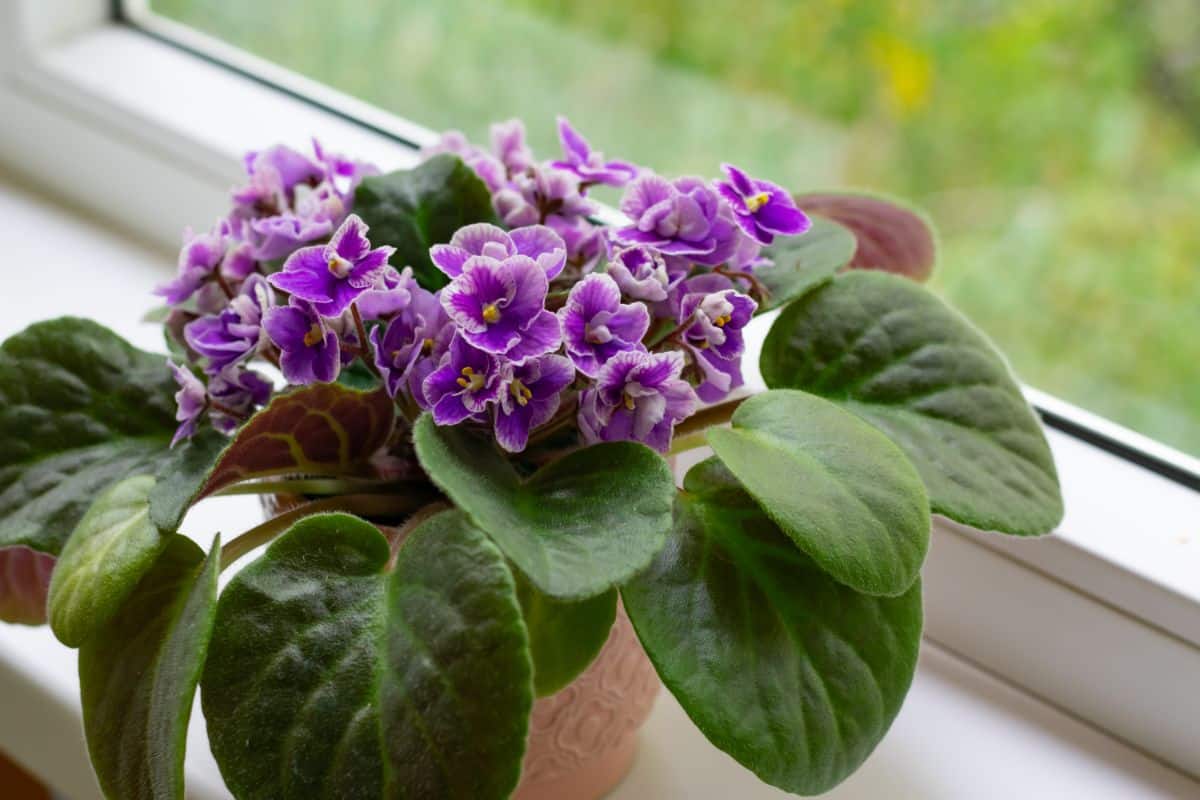
These small houseplants are known for their willingness to bloom all year long if they are happy and for their fuzzy, dark green leaves. They will do well under bright fluorescent lights, making them great little plants to brighten your office space.
The botanical name of these warm-climate flowers is Saintpaulia ionantha. They do best in small pots–small enough that the leaves hang over the edges. While usually grown only as houseplants, they are hardy to USDA zones 11 and 12, and if you live in such climates, they will grow in dappled or full shade.
If you are a fan of these small but pleasing plants, you can join the African Violet Society of America.
While African violets are sometimes available at garden centers or big box stores in the spring, the selection is often limited. Learning to propagate African violets is an inexpensive way to get a unique color or an especially vigorous and beautiful bloomer.
Jump to:
How To Grow African Violets From Leaf Cuttings
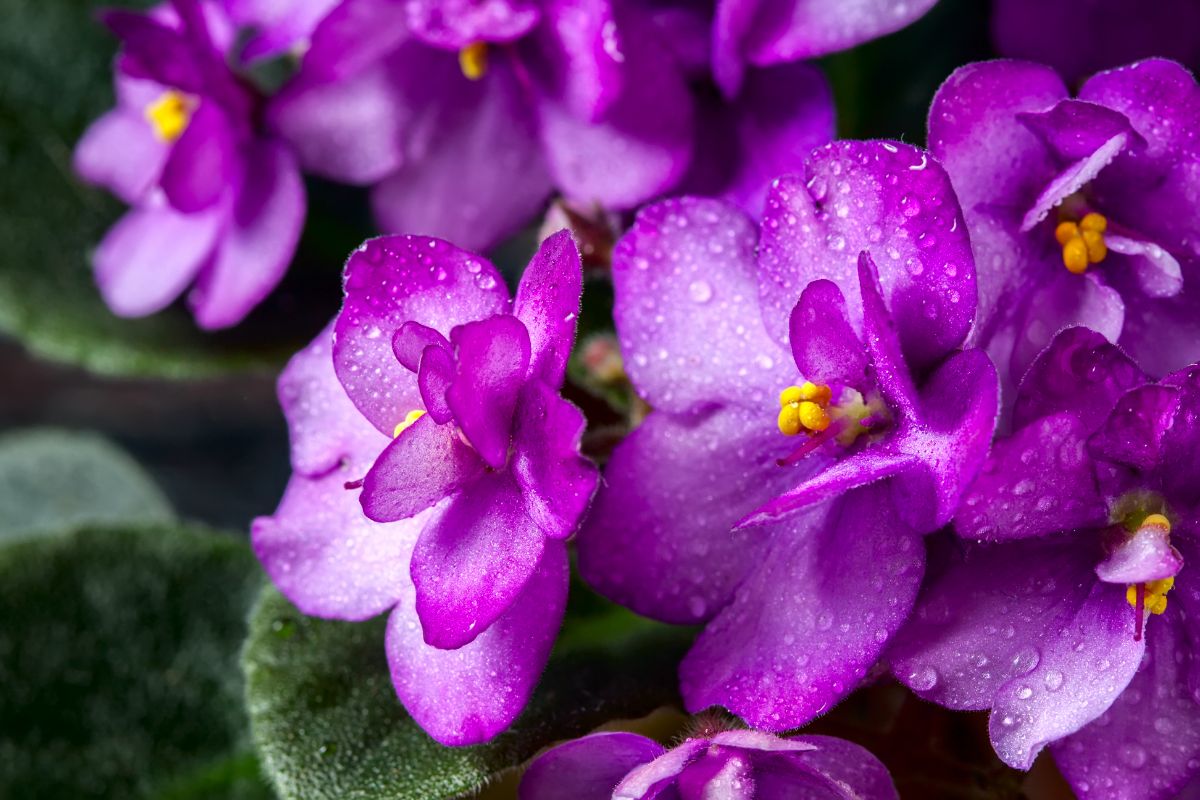
Taking cuttings for propagating African violets is relatively simple. Don’t worry about getting it perfect the first time. You’ll have success even if everything isn’t just right. Follow these steps.
To grow African violet leaf cuttings in soil
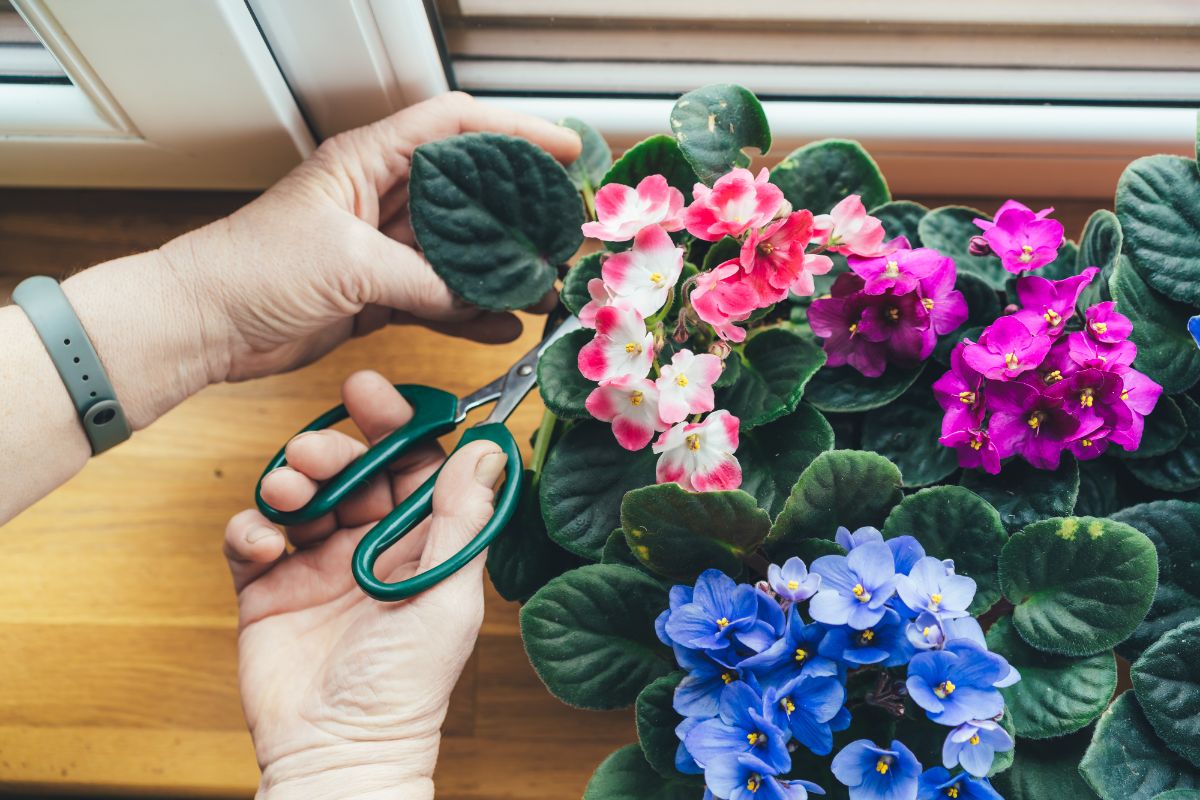
- Prepare your pots or containers. African violet leaf cuttings need humidity to prevent drying out, so pick something you can cover. Clear plastic clamshell packages from the bakery can work very well. They allow light to enter but can be sealed up to preserve humidity. Anything clear also has the advantage of letting you monitor root growth.
- Fill your containers with growing medium. A mix of perlite and vermiculite works well, as does a 50:50 mixture of vermiculite and damp sand. You can add a small amount of potting mix to the media if you like. Make sure whatever you choose holds some moisture but remains light and airy. Dense, heavy-growing mediums will lower your success.
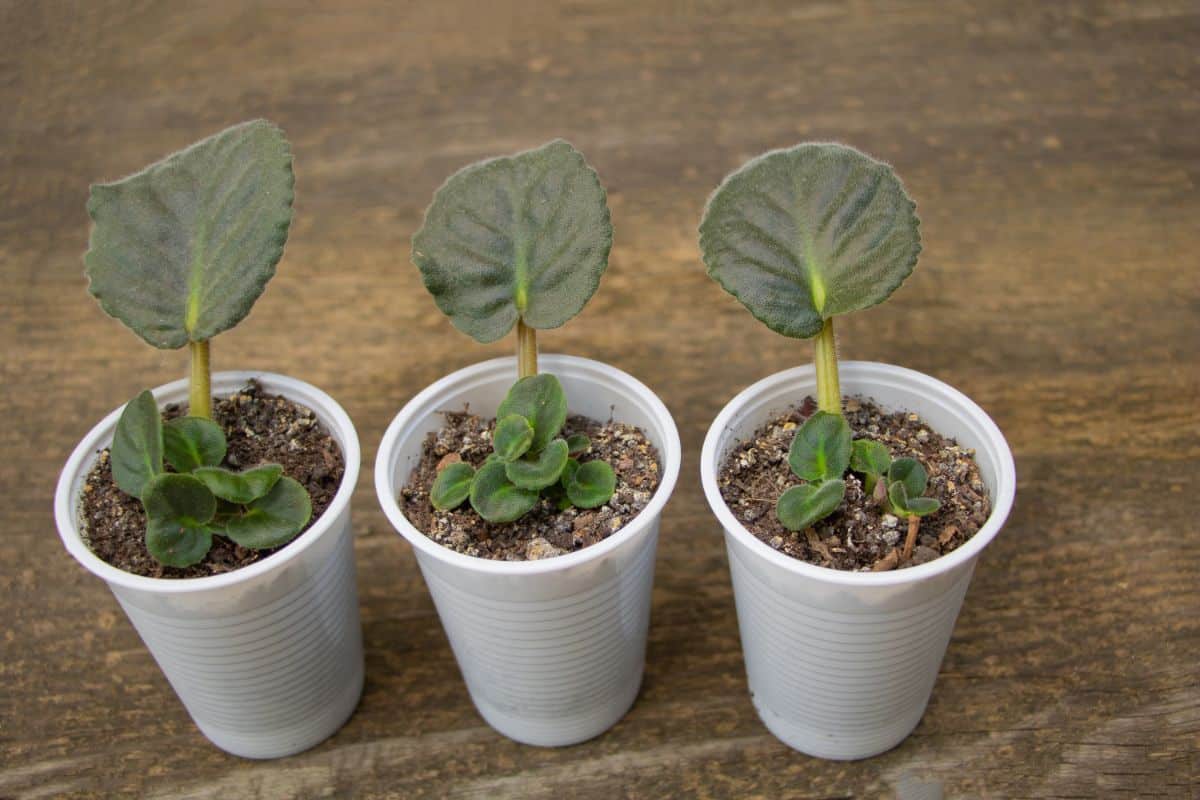
- Select a leaf from the middle of the plant. The oldest leaves at the bottom and the newest ones at the center often have a lower success rate when propagating.
- Snip or break the leaf stem, taking the leaf and about an inch or inch and a half of the petiole. If you end up with a leaf that has a bit shorter petiole, it’s okay. If your violet is large enough, gather several leaves.
- While many people find they don’t need any rooting hormone for African violets, it won’t hurt if you want to try it, and it may speed up your results. If you choose to use it, dip the fresh cut ends of your leaf cuttings and proceed to the next step.
- Insert your leaf cuttings into the medium at about a 45-degree angle. If you insert the petioles vertically, the leaves will be nearly upright and won’t catch much light. Placing them into the containers at an angle allows the leaf’s top face to be up the way it was on the mother plant.
- Cover your containers with a transparent lid or plastic wrap to keep the humidity high, and set them out of the way in a bright warm place.
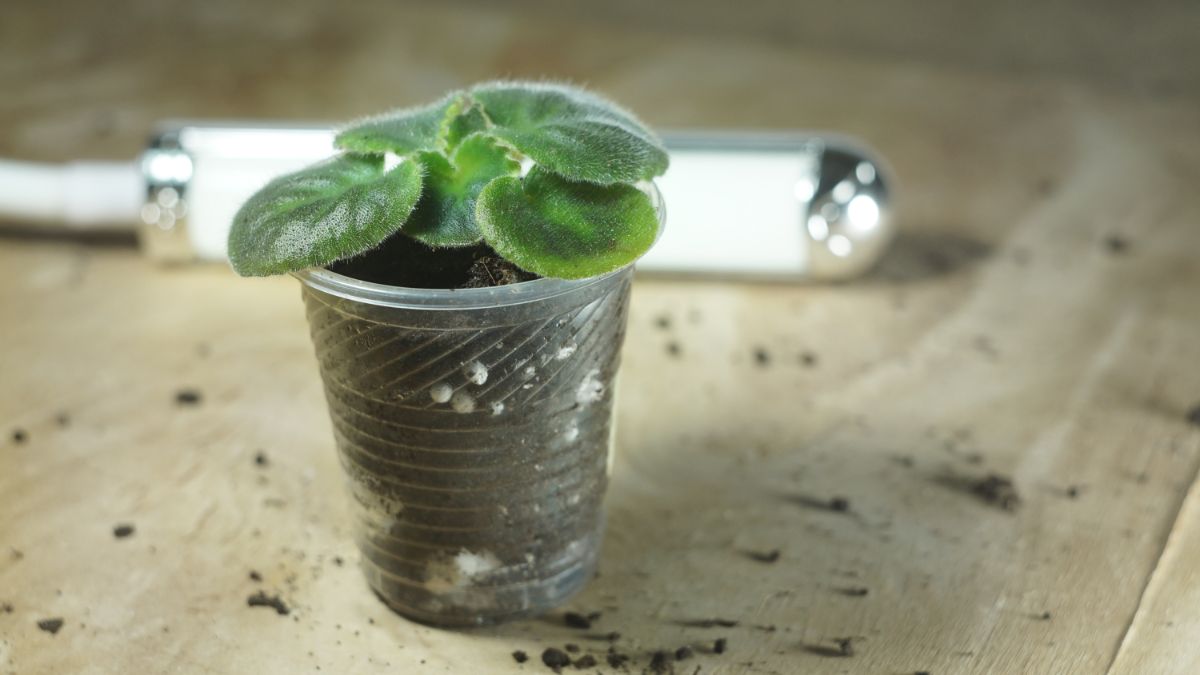
African violet cuttings will root in 3-6 weeks, depending on the temperature and vigor of the cuttings. They will start to grow new baby leaves at their base several weeks after rooting.
To grow African violet leaf cuttings in water
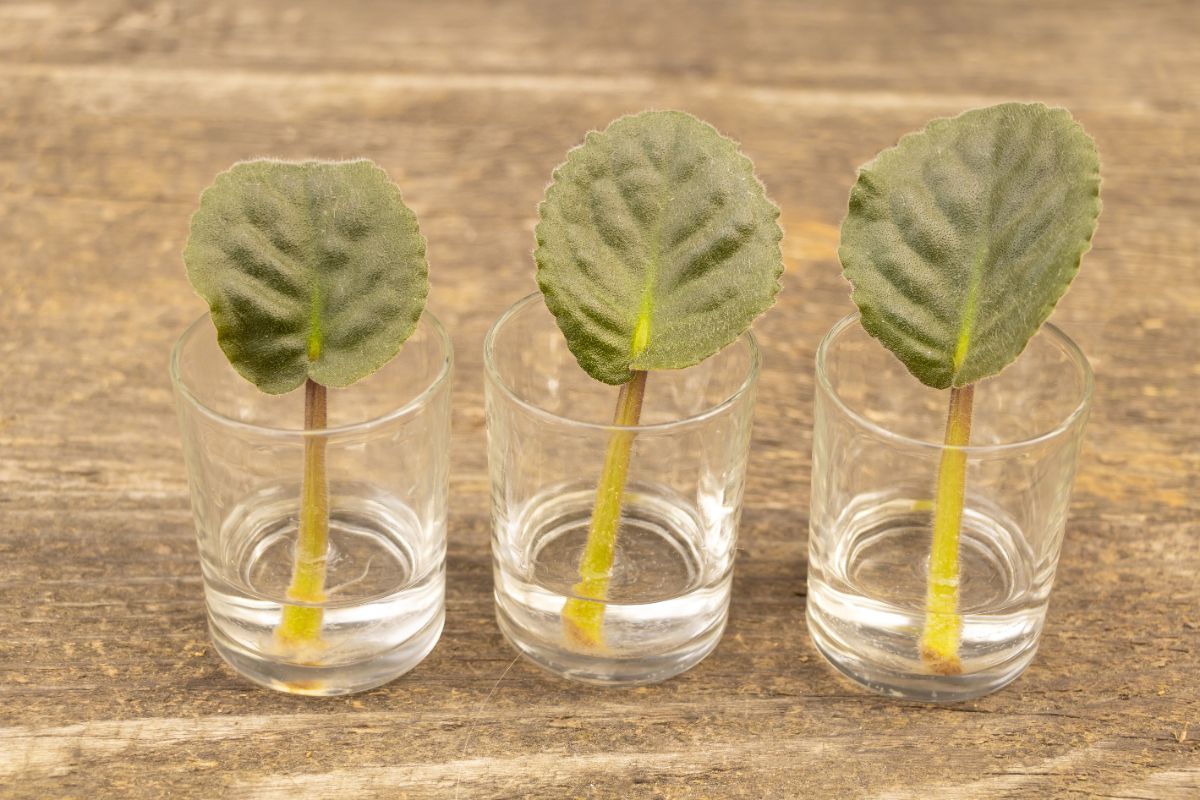
You may remember your grandmother rooting violets in a small juice glass on a windowsill. The method works, and you can try it too. They can be tricky to transplant into the soil if the baby leaves grow at the bottom of the petiole.
- Place the new cuttings, taken as above, in a small, clear-walled container filled with water. Make sure the petioles are submerged but not the leaves. Use a small vessel that will keep the plant upright. Don’t use a large jar.
To support the leaves, try wrapping plastic wrap over the top of the container and poke small holes in it with a knife for the petioles. Make sure you fill the container with water first!
Tip: If your tap water is treated with chlorine or other additives, and you experience trouble rooting cuttings in water, try another water source. Some municipalities treat their water heavily with chemicals.
- Change the water weekly to keep it fresh, and keep the jar in a brightly lit and warm spot out of direct sunlight.
- In 4-6 weeks, you should see small fine white roots beginning to grow. New small leaves may grow immediately above the roots underwater.
- After small baby leaves are established, replant the cutting in moist potting soil in a small pot and care for it as you would seedlings. It will need 8-12 hours of bright light (not direct sun) per day and likes the soil to be slightly moist.
If the bottom of the petiole gets slimy and has no roots, it is unlikely that cutting will survive. Remove it and try again.
Growing Tips For African Violets
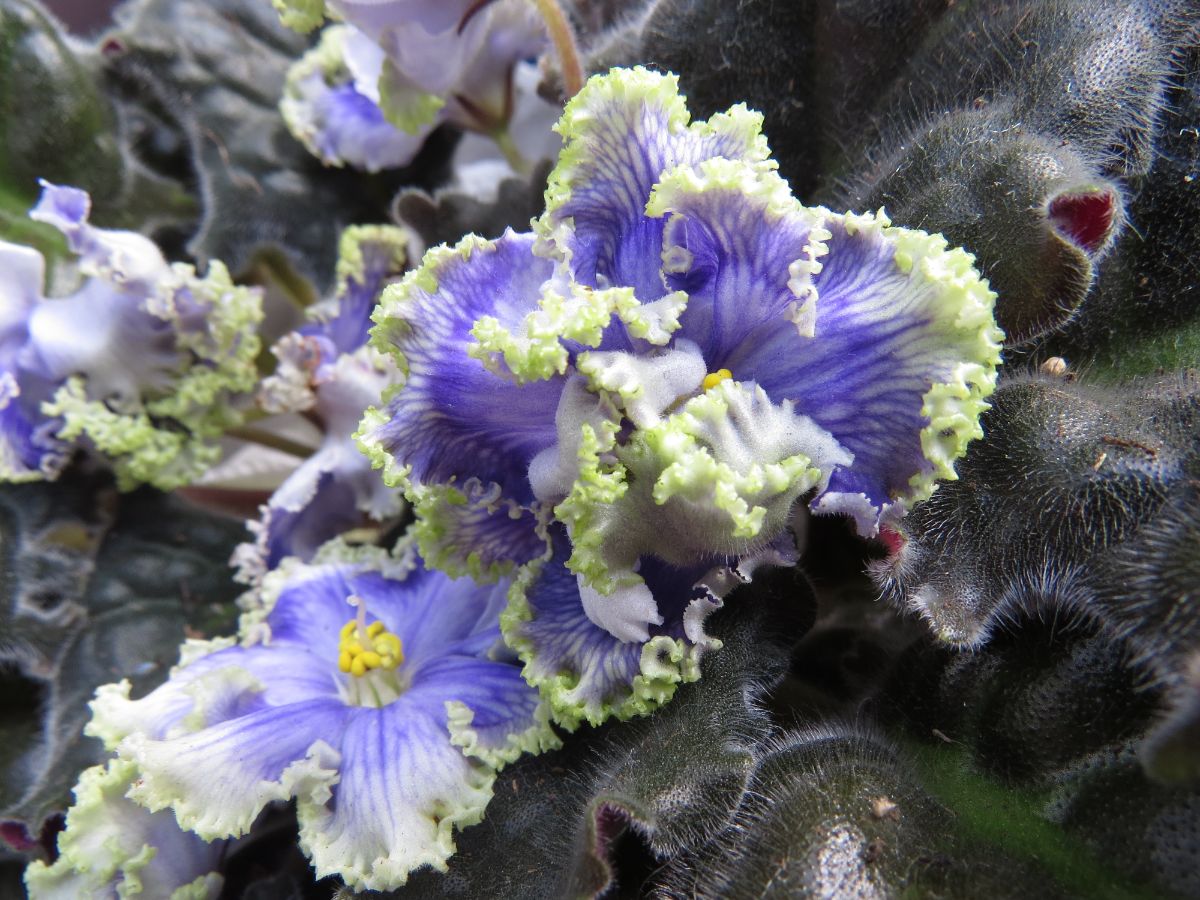
African violets are famous for their nearly endless display of color, small space requirements, and general ease of care. Follow these tips to keep your plant happy and flowering all year long.
Don’t overwater your plants
African violets are low maintenance, but the easiest way to kill one might be overwatering. When watering African violets, you can do so from the top or the bottom.
Check if your African violet needs water with these two methods
- Insert your finger a half inch deep and feel the soil. If it feels moderately dry or dry, water.
- Lift the pot. It likely needs water if it feels quite light or lighter than usual. You’ll get a feel for this after a few times.
To water from the top
- Water gently, all around the pot, under the leaves. Don’t pour water on top of the leaves, as it will cause spotting and discoloration. Keep going until water comes out of the drainage holes.
- If the soil becomes very dry, it may actually allow the water to run through without absorbing any. You’ll know that if water starts running out the bottom immediately.
If that happens, take the plant to the sink, and re-water several times until you can feel the weight of the pot has changed. It may take a few attempts to rehydrate the soil. Allow the excess water to drain and return the pot to its home, replacing the drainage tray under it.
To water from the bottom
- Water the drainage tray and let the soil and the plant take up the water. Depending on how dry the soil was and the makeup of your potting mix, it can take anywhere from about 30 minutes to a few hours for the water to reach the top.
- Once the soil at the top is moist, or after several hours, empty the saucer so the plant is not sitting in water.
For African violets, give them light, but not too much
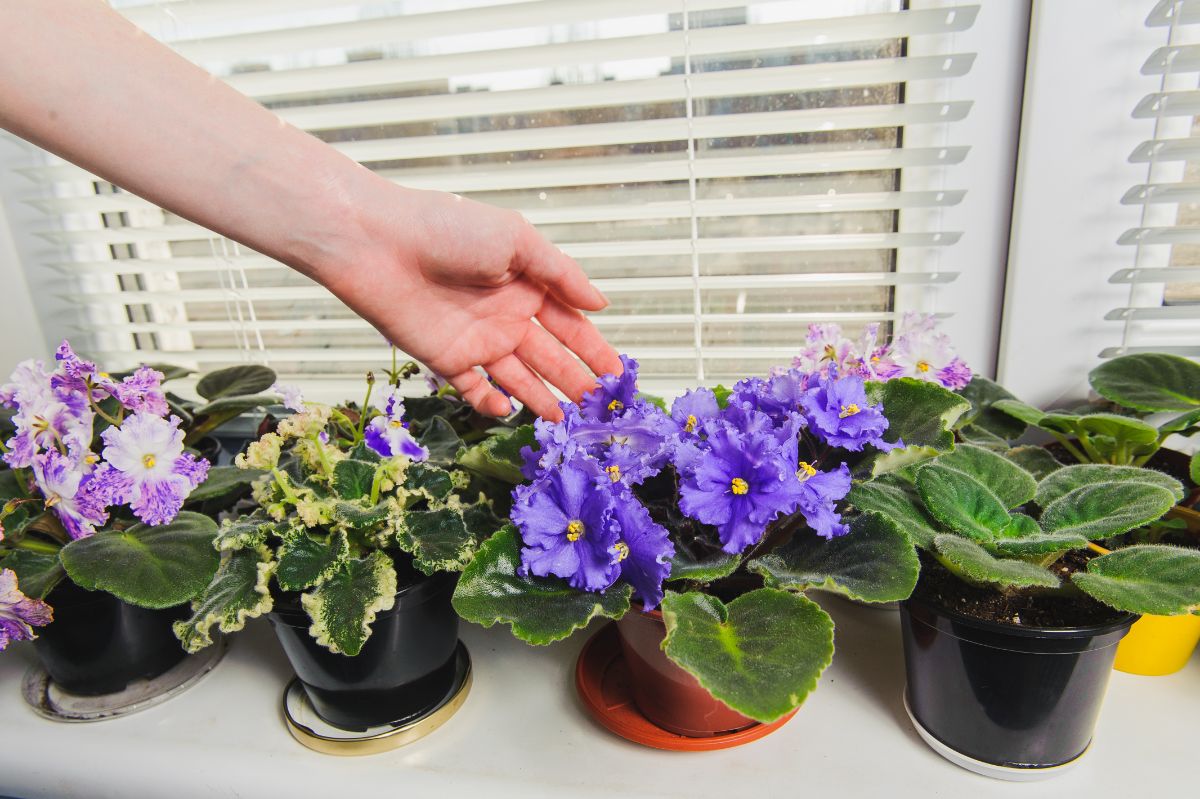
These are understory plants in a tropical forest. They like lower-intensity light. Try a north or east-facing window, but not so close to the window that they are cold in the winter. A foot or two from the window should be fine.
If your African violet grows long stems on the leaves, it’s reaching for the light and needs a bit more. Conversely, if the leaves look bleached, it’s getting too much light.
If you live in an area with short days and long winter nights, your violet may want additional light from an artificial source. A small fluorescent or LED grow light will work fine.
Fertilizing African violets
African violets like fertile soil and will bloom more readily as houseplants if they receive a frequent, low-intensity dose of fertilizer when watered.
If the package says to apply fertilizer twice per month at a rate of 1 TBSP, and you water weekly, cut that in half, i.e., half a TBPS per week dissolved in the water. Don’t make the mistake of overfertilizing them.
Have you had success propagating your African violets? Drop us a comment below and share your favorite tips!


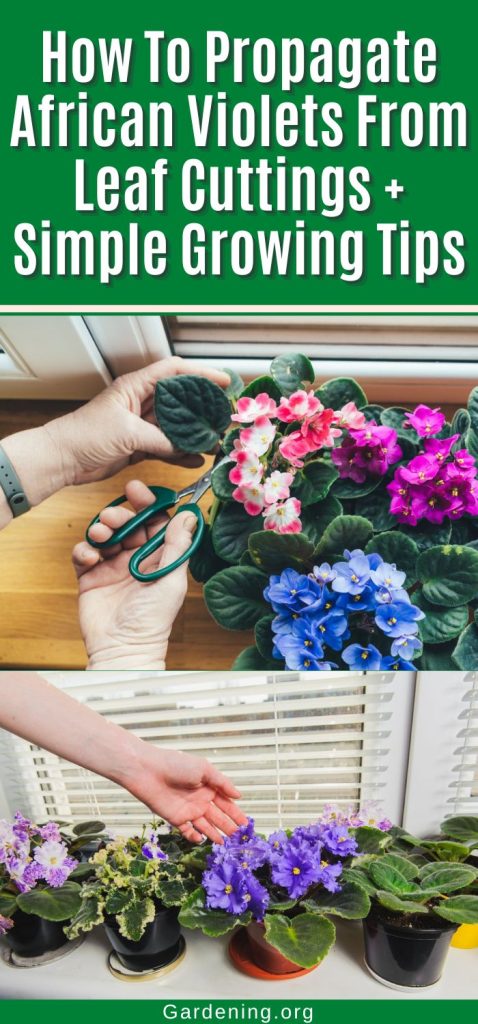
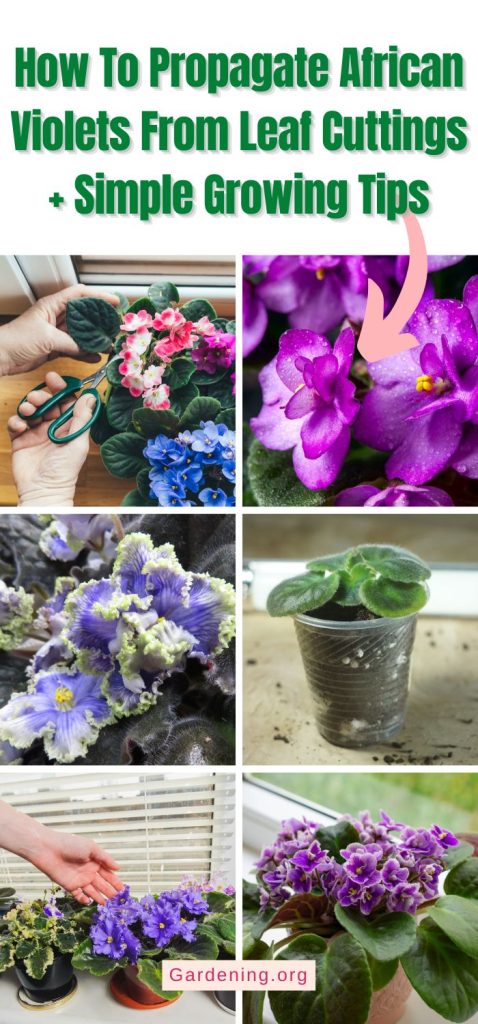


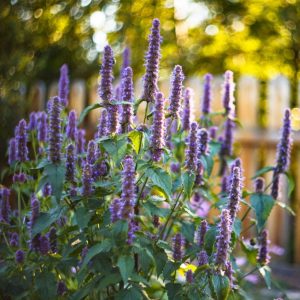


Connie Keller
I have my 3 violets in self watering violet pots and they never bloom. The plants are very healthy and pretty. They are very old like 8-10 years old. Any advice on getting to bloom?
Mary Ward
They might not like those self-watering pots. You might try a regular watering schedule by hand. Also, evaluate their light conditions.
Check out these articles to see if they help you troubleshoot the problem:
https://gardening.org/african-violet-stem-too-long/
https://gardening.org/african-violets-full-growing-guide/
JANIS LEE
All of my African Violets are in African Violet Pots where you plant the African Violet in the smaller pot that sits in the larger pot then you add water to the main pot and put the smaller pot in the bigger self watering pot. I love them and so do all five of my African Violets. I use collected rain water, instead of Tap Water!! Who knows what is coming out of the faucet! If I don’t have any collected Rain Water I go to the grocery store and buy a gallon of Spring Water, which I use on all of my indoor plants if I am out of Rain Water. Also, you can put in the water a little bit of Liquid Bloom Stuff for indoor blooming plants. Don’t Over Do the liquid bloom because that is a very small amount of water you are dealing with. Make sure you get for indoor blooming plants. Make sure you have it at the correct window too. If you do all these things, your plants should bloom. I’m not gonna say they’re gonna bloom constantly throughout the year, but I don’t think you could help from getting blooms if you do the above. Good Luck!
All Plants do better with rain water. Good luck!😊👍🏻